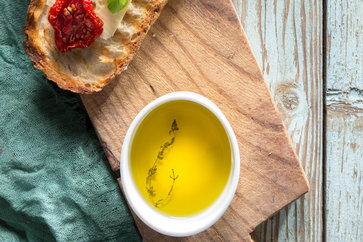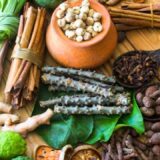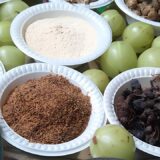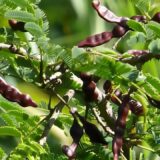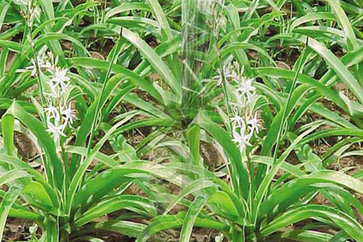Sattu: The Ayurvedic Super Food for Daily Health
In today’s fast-paced world, dietary habits, lifestyles, and environmental factors are constantly evolving. Unfortunately, many people blindly follow advertising trends and consume packaged or processed foods without fully understanding their nutritional value.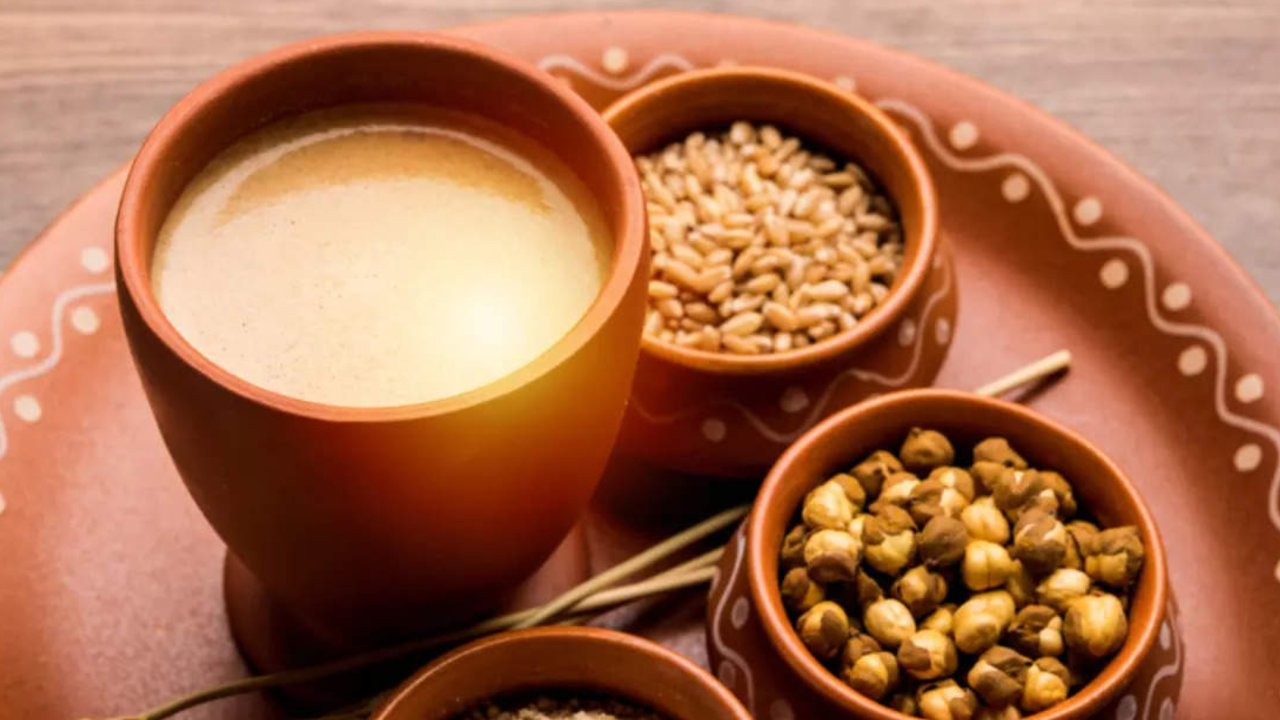
In recent years, the popularity of Western food items such as soups, oats, pasta, pizza, noodles, and other processed recipes has surged in India. While these foods may be convenient and trendy, they often lack the nutritional benefits that traditional Indian foods offer.
One such traditional food that has been gaining attention for its rich nutritional value is Sattu. Sattu, a staple in many Indian households, is not only a delicious and versatile food but also serves as a natural remedy for various ailments.
It has been used for centuries in India, not just as a food item, but also as a medicinal ingredient in treating numerous health conditions. Sattu is frequently mentioned in classical Ayurvedic texts, which emphasize its role in maintaining health and preventing diseases.
Known as Saktu in some regions, this humble superfood is made by roasting and grinding different cereals or herbs into fine flour. It can be prepared from a single cereal or a mixture of cereals and herbs, offering flexibility in its nutritional profile.
What is Sattu?
Sattu, often referred to as the “poor man’s protein,” is renowned for its high nutritional value and energy-boosting properties. This flour-like substance is packed with essential nutrients, making it a true “energy powerhouse.
Sattu is a traditional Indian flour made by dry roasting and milling chana (roasted gram). It is an incredibly versatile ingredient, widely used in a variety of foods and drinks across India. Sattu’s popularity stems from the numerous health benefits it offers.
Rich in vitamins, minerals, protein, and fiber, Sattu is a nutritional powerhouse, offering a well-rounded source of energy and nourishment for the body. Whether used in drinks, snacks, or meals, it plays a vital role in maintaining overall health.
What is Sattu in English Called
Sattu is often referred to as “roasted flour” or “roasted gram flour” in English. It is typically made from roasted pulses (such as chickpeas, barley, or wheat) or grains, which are ground into a fine powder. Sattu is a highly nutritious food ingredient commonly used in various recipes, especially in Indian cuisine, due to its health benefits and easy digestibility.
Nutritional Value of Sattu per 100g
Sattu is considered a superfood due to its impressive nutritional profile, making it an excellent addition to a balanced diet. Here’s a breakdown of the nutrients found in Sattu, which contribute to its health benefits:
Fiber: 8 to 10 g
Sattu is rich in dietary fiber, which promotes healthy digestion, reduces constipation, and supports gut health by regulating bowel movements. It also helps in controlling blood sugar levels.
Fats: 4 to 6 g
The fat content in Sattu is relatively low, and most of it consists of healthy unsaturated fats, which are good for heart health. It provides essential fatty acids without contributing to unhealthy fat intake.
Protein: 20 to 25 g (approximately)
Sattu is an excellent source of plant-based protein, making it ideal for vegetarians and vegans. This protein supports muscle repair and growth, boosts metabolism, and promotes overall body function.
Carbohydrates: 50 to 60 g
Sattu provides a steady release of energy due to its complex carbohydrates, which help maintain energy levels throughout the day. This makes it an excellent choice for physical activity or as a meal replacement.
Vitamins and Minerals: Contains iron, magnesium, calcium, and zinc
Sattu is packed with vital minerals like iron, magnesium, calcium, and zinc, which are crucial for bone health, immune function, and maintaining energy levels. It helps prevent deficiencies and supports overall well-being.
Calories: 397 kcal (approximately)
With around 397 calories per 100 grams, Sattu offers a nutritious and filling food option. It provides a great source of energy, making it perfect for breakfast or post-workout recovery.
Different Types of Saktu in Classical Texts of Ayurveda
In various classical texts of Ayurveda, Sattu is described in several forms based on the ingredients and preparation methods. Here are the different types of Sattu:
1. Roasted and Dehusked Barley Powder: This is referred to as Saktu in Ayurveda. The barley is roasted and its husk is removed before being ground into a fine powder.
2. Cereals Roasted and Ground by Machine: Sattu can also be made by roasting and grinding cereals using a machine, and this form is still known as Saktu.
3. Powder of Roasted Barley or Other Cereals: When barley or other cereals are roasted and then ground into a powder, this powder is also recognized as Saktu.
4. Roasted Barley and Other Cereals (Dhana): In Ayurveda, roasted barley and other cereals are known as Dhana, and their powdered form is called Saktu.
5. Powder of Roasted Barley (Dugdhika): The powder made from roasted barley is sometimes referred to as Saktu or Dugdhika, indicating its beneficial properties, including its use with milk (as “Dugdhika” translates to “related to milk”).
These variations of Sattu are important for different uses in Ayurvedic medicine and daily nutrition, and they are chosen based on the needs of the individual and their health condition.
General Properties of Sattu
The general properties of Sattu, as described in classical Ayurvedic texts, are provided in detail in the referenced tables. These include its effects on the body, such as its warming or cooling properties, its taste, and its therapeutic benefits.
Properties of Specific Types of Sattu
1. Yava (Barley) Sattu:
Digestibility: Yava (Barley) Sattu is known for its light and easily digestible nature. It helps in improving digestion and is considered beneficial for people with weak digestion or impaired Agni (digestive fire). According to Ayurvedic texts, it is excellent for cooling the body and pacifying Pitta dosha, which makes it ideal for consumption in hot weather or during periods of physical exertion.
Cooling Effects: Barley, being a cooling herb, is highly recommended for balancing internal heat and preventing issues like acidity or heartburn. It is often used to soothe inflammation and irritation in the body, providing a calming effect on the digestive system.
Supporting Weight Loss: The high fiber content in barley Sattu helps promote satiety, making it an ideal addition for those aiming for weight management, as it helps in reducing overeating.
2. Shali Sattu (Rice Sattu):
- Nourishing and Strengthening: Shali Sattu, made from rice, is considered deeply nourishing and strengthening for the body. It is rich in carbohydrates, providing a good source of energy. This type of Sattu is particularly beneficial for people recovering from illness, as it helps rebuild strength and vitality.
- Balancing Doshas: Shali Sattu is known to balance Vata and Pitta doshas. It is highly recommended for individuals with a Vata-predominant constitution due to its grounding and stabilizing properties.
- Gentle on Digestion: Rice Sattu is easier to digest compared to other grains, making it suitable for people with sensitive digestive systems. It supports the body in gaining proper nutrition without overtaxing the digestive system.
3. Badara & Karkandhu Sattu (Zizyphus jujube & Zygiphus nummularia):
- Healing Properties: Sattu made from Badara (Zizyphus jujube) and Karkandhu (Zygiphus nummularia) is particularly known for its healing properties. These fruits have astringent, anti-inflammatory, and rejuvenating effects on the body. Badara is often used to improve vitality and treat ailments related to blood, skin, and respiratory issues.
- Strengthening the Immune System: These fruits have immune-boosting qualities, helping the body fight infections and promoting overall health. Sattu made from these ingredients is often recommended for individuals suffering from chronic conditions or those recovering from illnesses.
- Promotes Skin Health: Both Badara and Karkandhu are known for their skin-beneficial properties, including the treatment of wounds and skin rashes. The Sattu made from these fruits helps improve skin complexion and promotes healthy, glowing skin.
4. Lajja Sattu:
- Unique Uses in Ayurveda: Lajja Sattu, made from a specific plant known as Lajja (or Mimosa pudica), has particular medicinal uses according to Ayurveda. It is believed to have calming and sedative properties, helping reduce anxiety, stress, and emotional imbalances.
- Anti-inflammatory: This Sattu is used for its anti-inflammatory effects, particularly in treating conditions involving inflammation or irritation. It is often used in Ayurvedic formulations aimed at alleviating conditions like ulcers, infections, or inflammation in the digestive tract.
- Supports Mental Clarity and Calmness: Due to its sedative and relaxing effects, Lajja Sattu is sometimes prescribed to help balance the nervous system and improve mental clarity, making it a valuable addition to the diet in cases of insomnia or mental fatigue.
Each variant of Sattu offers its own set of properties, making it a versatile ingredient in both diet and Ayurvedic treatments. By choosing the right type of Sattu based on one’s specific health needs or dosha imbalance, it can provide targeted support for overall well-being.
Rules for Sattu Consumption
Various Ayurvedic texts provide guidelines regarding the proper consumption of Sattu, including indications and contraindications. These rules help maximize its benefits while minimizing adverse effects:
Proper Consumption:
- Sattu should not be left unattended in its container.
- It should always be consumed with ghee and sugar, particularly in the evening or after meals.
- It should not be consumed in large quantities, nor should it be eaten twice a day in an interrupted fashion, especially when accompanied by water intake or tearing with the teeth.
- Excessive use of Sattu is considered a cause for worm infestation (Abhyantra Krimi), which is known as a Nidana (cause) in Ayurvedic texts.
- Contraindications: Sattu consumption is not recommended during the transitional period between the end of the summer season and the beginning of the rainy season (Tapatyaya), as this period is associated with a higher risk of digestive disturbances.
These principles are intended to ensure that Sattu’s health benefits are fully realized, while preventing potential negative effects from overconsumption or improper use.
How is Sattu Prepared from Grains and Cereals?
Sattu can be made by roasting grains or cereals, such as barley or wheat, and grinding them into a fine powder. Roasting these grains is an essential step in the preparation process.
According to Ayurvedic principles, roasting is referred to as “Agni Samskara,” which translates to processing with fire. During this process, dry roasting reduces the moisture and oily content in the grains, transforming them into a dry (Ruksha) and easily digestible (Laghu) form.
This method also increases the Vata Dosha in the body, as it imparts the qualities of dryness and lightness. Sattu made from cereals acts as a dietary supplement and provides essential nutrients. It is also known for its easy digestibility, making it a suitable choice for individuals with sensitive digestive systems or those recovering from illnesses.
How Sattu is Prepared for Medicinal Use
- Medicinal Sattu: In addition to the traditional grain-based Sattu, medicinal Sattu is prepared using specific plants known for their therapeutic properties.
- Bhallataka Sattu: A notable example is Bhallataka Sattu, mentioned by Acharya Charaka in Ayurvedic texts. Bhallataka is recognized for its sharp (Tikshana) and heating (Ushana) qualities, often used to treat conditions requiring drastic purgation or cleansing.
- Preparation Method for Bhallataka Sattu: Bhallataka Sattu is not consumed directly like regular Sattu. Instead, small amounts of Bhallataka powder are carefully mixed with other Sattu preparations to balance its strong therapeutic effects.
- Caution with Medicinal Sattu: Sattu made from medicinal plants, such as Bhallataka, requires caution due to its potent therapeutic properties. These may not be suitable for everyone, and it is advised to consult an expert before using it.
- Enhances Nutritional and Therapeutic Benefits: Roasting the grains used for Sattu preparation improves both its nutritional value and therapeutic effects by transforming the grains into a more digestible form.
- Dry Roasting Removes Excess Moisture and Oils: The dry roasting process removes moisture and oils from the grains, making them easier to digest and lighter in nature.
- Increases Vata Dosha: According to Ayurvedic principles, roasting increases the Vata Dosha in the body, as roasted foods are considered dry (Ruksha) and light (Laghu). This makes Sattu ideal for balancing excessive moisture and heaviness in the body.
- Beneficial for Kapha and Pitta Imbalances: Sattu is particularly beneficial for individuals with Kapha or Pitta Dosha imbalances, as it helps reduce excess moisture and heaviness, providing balance to the body.
- Faster Nutrient Absorption: The fine grinding of roasted grains into powder increases the bioavailability of nutrients, allowing for faster absorption by the body. Smaller particle sizes enable quicker digestion and energy release.
- Quick Energy and Instant Nourishment: Due to its fine particle size and quick absorption, Sattu is praised for providing instant energy and nourishment, making it a convenient and effective dietary supplement.
Method of Consumption Sattu
- Mixing with Ghee, Sugar, and Water: The ideal way to consume Sattu is by mixing it with Ghee, sugar, and water. This combination helps balance Sattu’s natural dryness (Ruksha) and prevents the increase of Vata Dosha.
- Balancing Dryness: Ghee provides moisture, and sugar adds sweetness, making Sattu more palatable and easier to swallow. Without these additions, Sattu may become sticky and hard to consume due to its moisture-absorbing nature.
- Avoid Drinking Water Simultaneously: Do not drink water at the same time as consuming Sattu. Water intake can disrupt the direct absorption of Sattu into the digestive system.
- Uninterrupted Consumption: According to Ayurvedic teachings, consuming Sattu without chewing or drinking water ensures that it bypasses regular digestive processes, allowing it to be absorbed more quickly and efficiently by the body.
- Promotes Fast Metabolism: By allowing Sattu to be absorbed without interruption, it supports a faster metabolism and ensures the nutrients are efficiently processed by the body.
Top 10 Benefits of drinking sattu everyday
1. Boosts Energy Levels: Sattu is a great source of complex carbohydrates that provide sustained energy throughout the day. It helps replenish energy reserves, making it ideal for people with active lifestyles or those needing a natural, long-lasting energy boost.
2. Aids in Digestion: The high fiber content in Sattu promotes healthy digestion and helps prevent constipation. It acts as a natural laxative, improving bowel movements and overall gut health, leading to better nutrient absorption and reduced bloating.
3. Supports Weight Loss: Due to its high fiber and protein content, Sattu helps you feel full for longer, reducing cravings and preventing overeating. It supports appetite control, making it a great addition to any weight loss plan by helping you maintain a healthy diet.
4. Regulates Blood Sugar Levels: With its low glycemic index, Sattu helps stabilize blood sugar levels, making it beneficial for people with diabetes or those looking to maintain healthy blood sugar levels. It provides slow-releasing energy without causing blood sugar spikes or crashes.
5. Rich in Protein: Sattu is a plant-based protein powerhouse, making it an excellent choice for vegetarians and vegans. The protein content helps support muscle growth, repair, and recovery, contributing to lean muscle mass and overall body strength.
6. Improves Skin Health: Packed with antioxidants, vitamins, and minerals, Sattu helps promote healthy skin by preventing acne, reducing wrinkles, and providing a natural glow. It hydrates the skin and protects it against environmental stressors, keeping it youthful and radiant.
7. Boosts Immunity: Sattu contains essential vitamins and minerals like zinc, magnesium, and iron, which are crucial for strengthening the immune system. Regular consumption of Sattu enhances the body’s defense mechanisms, helping to fight off infections and illnesses.
8. Promotes Heart Health: Sattu is low in unhealthy fats and rich in healthy fats, such as omega-3 fatty acids, which help reduce cholesterol levels and improve heart health. Its consumption supports a healthy cardiovascular system and lowers the risk of heart-related diseases.
9. Improves Bone Health: Sattu is rich in calcium and magnesium, two vital minerals that support strong and healthy bones. Consuming Sattu regularly can help prevent bone-related issues like osteoporosis, especially for those at risk as they age.
10. Hydrates the Body: Sattu is often consumed as a cooling drink, especially during hot weather. When mixed with water or milk, it helps hydrate the body, restore electrolytes, and regulate body temperature, making it an excellent choice for staying refreshed during summer.
These benefits make Sattu an excellent addition to your daily diet for improving overall health, maintaining energy, and supporting long-term well-being.
How to Make Sattu at Home
1. Soak the Gram: Begin by taking 1 kilogram of black gram (chickpeas). Choose high-quality chickpeas for the best results. Soak the chickpeas in enough water to cover them and let them sit overnight (approximately 8 hours). This soaking process softens the chickpeas, making them easier to roast and grind later.
2. Rinse and Drain: After soaking, rinse the chickpeas thoroughly 3-4 times under clean, running water to remove any dirt or impurities. It is important to rinse them well to ensure that the grains are clean before the next step.
3. Dry the Chickpeas: After rinsing, spread the chickpeas out in a thin layer on a clean, dry surface or a tray. Leave them under the sun for 5-6 hours to dry. Sun-drying is essential because it helps remove excess moisture and prepares the chickpeas for roasting. Ensure they are completely dry before moving on to the next step to avoid any chance of them steaming instead of roasting.
4. Roast the Chickpeas: Once the chickpeas are fully dried, heat a heavy-bottomed pan or skillet over medium heat. Add the chickpeas to the pan and roast them until they turn golden brown. This process generally takes 10-15 minutes, so be sure to keep stirring them occasionally to avoid burning. Roasting enhances the flavor of the chickpeas and makes them crispier, which is essential for creating the right texture in your Sattu powder.
5. Peel the Roasted Chickpeas: After the Chickpeas have been roasted to a golden brown, let them cool for a few minutes. Once they are cool enough to handle, the skins will easily peel off. You can rub the roasted chickpeas between your palms or use a cloth to help remove the skins. This step is important because the skin can affect the texture of the Sattu, so it’s best to remove as much as possible.
6. Cool the Roasted Chickpeas: Allow the roasted chickpeas to cool completely before grinding. This is a crucial step, as grinding warm chickpeas can cause the powder to become sticky or clumpy. Let the roasted chickpeas rest for about 15-20 minutes until they reach room temperature.
7. Grind the Chickpeas: Add the cooled, peeled chickpeas into a dry grinder or high-speed mixer. Grind them into a fine powder. Be sure to grind them thoroughly to ensure a smooth, powdery consistency. The finer the powder, the better the bioavailability of nutrients, as smaller particles are absorbed more quickly by the body. You can adjust the texture based on personal preference, whether you like it coarser or finer.
8. Optional Flavoring: To enhance the flavor of your Sattu, you can roast cumin seeds separately in a pan until they become aromatic and then add them to the ground chickpeas. This adds a savory depth to the Sattu. For a more robust flavor, you can also add a pinch of black pepper or other spices like ginger powder or cinnamon, depending on your taste preference. These spices can elevate the taste and nutritional profile of the Sattu.
9. Sift the Powder: To ensure a fine, uniform texture, sift the ground chickpea mixture using a fine mesh sieve. This removes any larger, coarser particles from the powder, giving you a smooth consistency. Sifting is particularly useful for recipes that require a finer powder, such as Sattu drinks or laddoos.
10. Storage: Once your Sattu is prepared, store it in an airtight container to maintain its freshness. Make sure to keep it in a cool, dry place away from moisture and sunlight. Proper storage will keep the Sattu powder fresh for up to a month, allowing you to use it whenever needed.
Your homemade Sattu is now ready for use in a variety of nutritious and delicious recipes! You can incorporate it into Sattu drinks (Sharbat), parathas, ladoos, or simply mix it with water, ghee, and sugar for a quick energy-boosting meal. Enjoy the goodness of this healthy and versatile ingredient!
Precaution for Sattu Consumption
While Sattu offers numerous health benefits, its consumption must be done with care:
1. Avoid Consumption After Meals: Sattu is highly nutritious, and consuming it after a meal can lead to Adhyashana (over-eating), which may disrupt digestion or lead to over-nutrition.
2. Limit to One Serving Per Day: Sattu is a complete food and, when consumed in large quantities or twice a day, could result in excessive dryness (Rukshata), which may affect the balance of the body’s energies.
3. Sattu Should Be Taken in Moderation: Excessive consumption can also cause issues related to improper digestion or bloating, particularly when combined with water.
In Ayurveda, equal importance is given to both Ahara (diet) and Aushadha (medicine). Ayurvedic dietetics encompasses a wide range of food preparations and beverages, each designed to support health and balance. Sattu is one such formulation, highlighted in nearly all classical Ayurvedic texts for its nutritional and medicinal benefits.
Resources:

